Maeving RM1 (2022) review | City-based electric motorcycle first impressions
A London tour on the new Maeving RM1 electric motorcycle, with elegant style and endless pint-sized fun. The learner-friendly 125cc of the future?

New British manufacturer Maeving has burst onto the blossoming two-wheeled electric scene with a fresh take on the market. The electric scene is ultimately polarising, but quickly gaining momentum, particularly in the low to mid-capacity segment. The first offering from its Coventry headquarters is the new Maeving RM1 motorcycle.
Is it a city commuter? Is it a coffee shop poser? Or is it a well-made and stylish machine that appeals to a wide urbanite crowd? Simply put, it could be all of those.
We headed over to London for a UK launch and first ride of the 110cc equivalent Maeving RM1. A classically-inspired take that doesn’t look too dissimilar to how you'd imagine a futuristic Bonneville.
You may also want to check out our Best Electric Motorcycles article.

Maeving RM1 price & colours
With the first production run selling out nigh on instantly, the Maeving RM1 is priced starting at £4,995, bumping to £5,990 if you opt for a bonus battery. 7 colours are available, ranging from a heritage British racing green, the always-suave Black (as ridden on the day), to silvers, blues and whites.
Comparatively, the Super Soco TC Max (spoked model) is £4,499. We’ll wait and see if the ‘big 4’ can beat these electric motorcycle prices through sheer economies of scale. Remember, though, that Maeving is a UK manufacturer, and it’s always good to support your local.
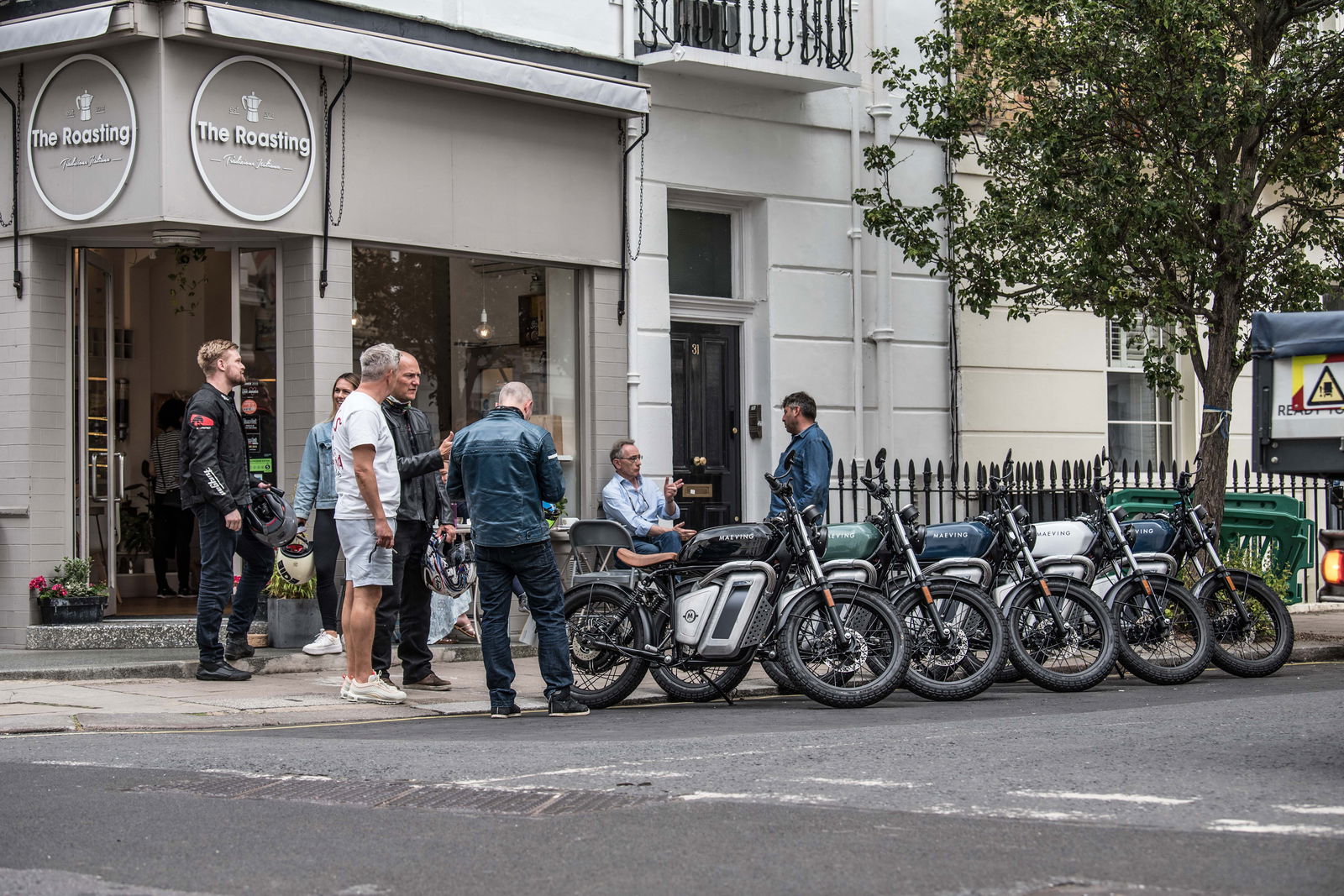
This Coventry marque is also doing things differently when it comes to the typical consumer journey. As opposed to having dedicated dealerships, Maeving will run primarily as an online manufacturer, one where you select your machine, place the order, and your RM1 is delivered to your door and serviced there and then - each unit built to order.
It’s a novel way of doing things and is a glimpse at a possible future of buying your next motorcycle without needing to leave the sofa.
Though, that’s not to say you must go in blind, Maeving say they’ll regularly run pop-up shops, feature their bikes at some high street shops & dealerships, and host demo rides to give you a chance to swing a leg over.

Engine
As the Maeving RM1 is a learner-friendly 110cc equivalent, peak power of 5.9 bhp & peak torque of 160Nm are distinctly electric figures, and the restricted model can be ridden at 16 with CBT - Maeving can then derestrict it should you wish.
A Bosch hub motor mounted in the rear wheel (they say it’s the first to be integrated directly with spoked wheels) spools up quickly and practically entirely silently, whisking you up to a top speed of 45mph.
Though, as this launch was in central London, that was a speed we didn’t quite reach - we spent most of the time at 20 mph. Top speed on a machine like this is far from its divine purpose, rather this is all about the sincere benefit of getting past cars and traffic - plenty of that in city centres.

In terms of torque and power delivery, it varies depending on which mode you’re in. A choice of mode 1-2-3 grants a twist-n-go 20mph/35ish mph/45mph top speed respectively, adjusted by the tap of a button. In mode 1 the bike accelerates a tad slower to 20 mph but then you can sit there, throttle pinned, and cruise past the many speed cameras worry-free, whilst mode 3 silently zips you up to 20 mph and slopes off as you get to 35 mph - it feels exactly like a 110cc that tops out near 45mph.
I’d liken the handling to that of a pushbike. Weighing in at around 111 kg (inc. single battery), I could quite literally pick up the rear wheel with two hands under the seat - and I weigh about the same as the bike itself (~95 kg if you’re wondering). The turning circle is extremely sharp with a 1395mm wheelbase, and at speed, it’s a very balanced ride with 19” wheels front and rear (mostly for the style when quizzed on this), and ultimately perfect for navigating tight spaces.
A note on the silent nature of the RM1, there was absolutely no need for earplugs, and you can happily chat away to riders next to you as you cruise along. It made for a lovely sightseeing tour where we could all point at the goings on in Leicester Square, Parliament, Big Ben, etc.

Battery & Range
Perhaps the most important segment. One battery is housed low down and centrally, with a locked door opening at the push of a button on the handlebar, revealing a sleek bamboo-handled 50.4V unit.
A second battery, should you choose to use one, is kept in the tank space, again behind a locked door opening by holding the same lock button on the handlebar - you’re given a 5-second window when shutting off to pop both compartments.
With both batteries in use the quoted max range is 80 miles, halving to 40 miles with the single battery. It sounds like a short range on paper, but this is primarily a short-distance urban machine - even 20 miles is quite far in a city.

Over the course of our 20-or-so mile day tour, I set off at around 92% and finished on 51% - so not quite on target for the full 80 miles. Though the caveat here is that range is hampered by my weight, a smaller rider finished with around +75% of battery remaining.
Removing the 12kg batteries is easily done with a smart mounting plate underneath to connect to both the bike and the remote charger (which then connects to the mains plug to recharge).
Charge time 0-100% is around 4 hours 10 minutes, but 0-80% is 2 hours 55 minutes, with 42 Ah charging capacity. You’d do well to finish a ride on 0% battery, so a 10%-80% charge would be just over 2 hours - not too bad. Running costs are estimated at around £60/year.

The battery, with LG MJ1 lithium cells within, comes with 3 years of warranty (the bike itself is 2 years from new), with replacements available for £995. A last note, if you choose to run lighter with 1 battery cell, the tank compartment becomes a handy place to keep your gadgets (with a built-in USB charger), security, whatever you want.
Features & spec
Aside from the USB plugs, the Maeving RM1 keeps it simple electronically, though you can opt for a 3-year anti-theft tracking subscription for £195.
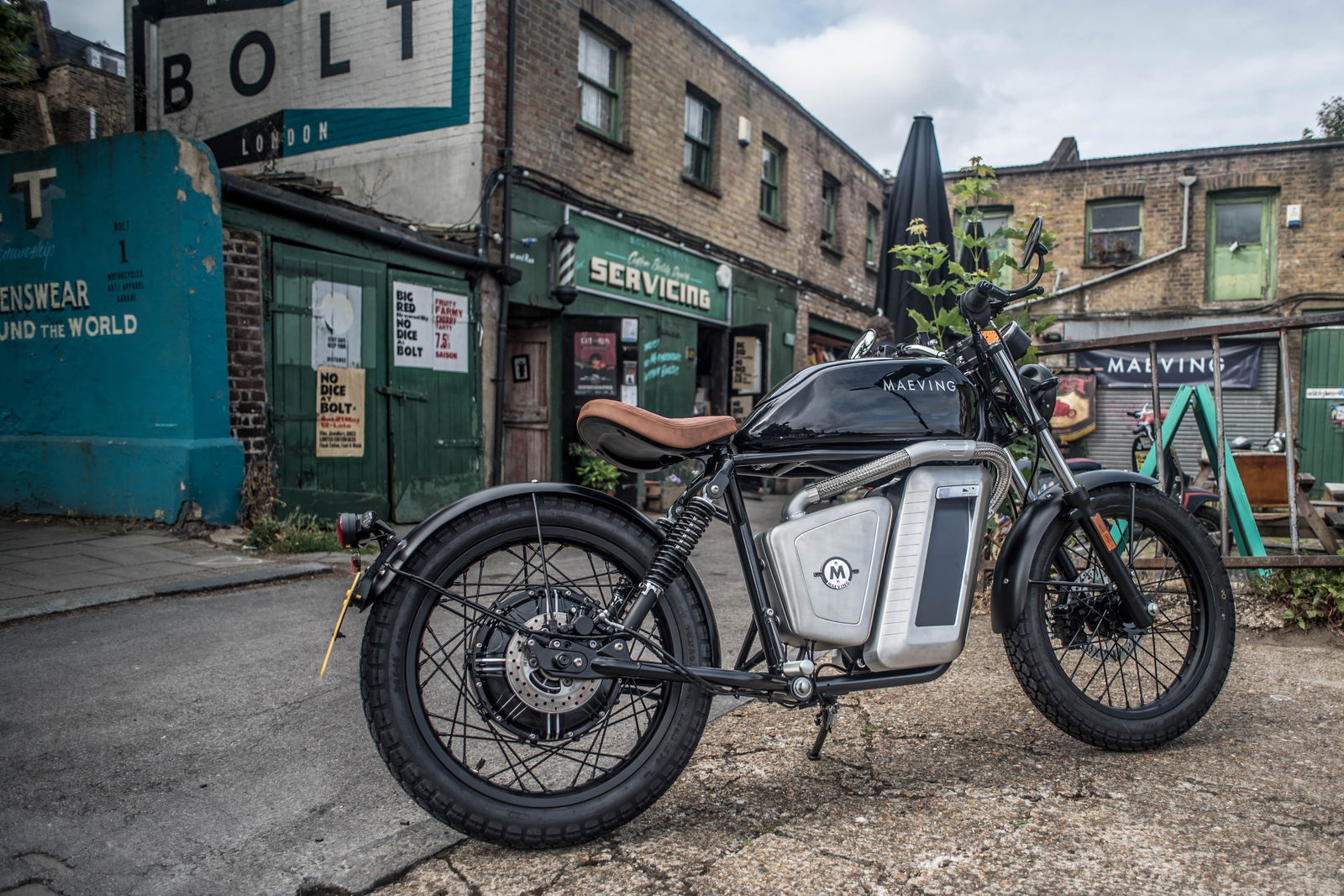
In my eyes, the simplicity of the machine is a feature in itself. The style is very much classic, but is built to give that sleek modern edge with no surplus parts hanging around for no reason. I can honestly say that we were constantly turning heads and explaining what we were riding - passers-by, taxi drivers, even the police at Downing Street. Everyone was in awe, simply put, and if you like to turn heads…
We even chatted to someone on a £2,500 electric-assist cycle, who was surprised that for double his money he’d be riding about on a motorcycle instead. Don’t blame you, mate!
Moving to a bit of spec, you’ve got a 785mm bobber seat, USD front suspension and preload-adjust twin rear shocks, and disc brakes 240mm front and 180mm rear.
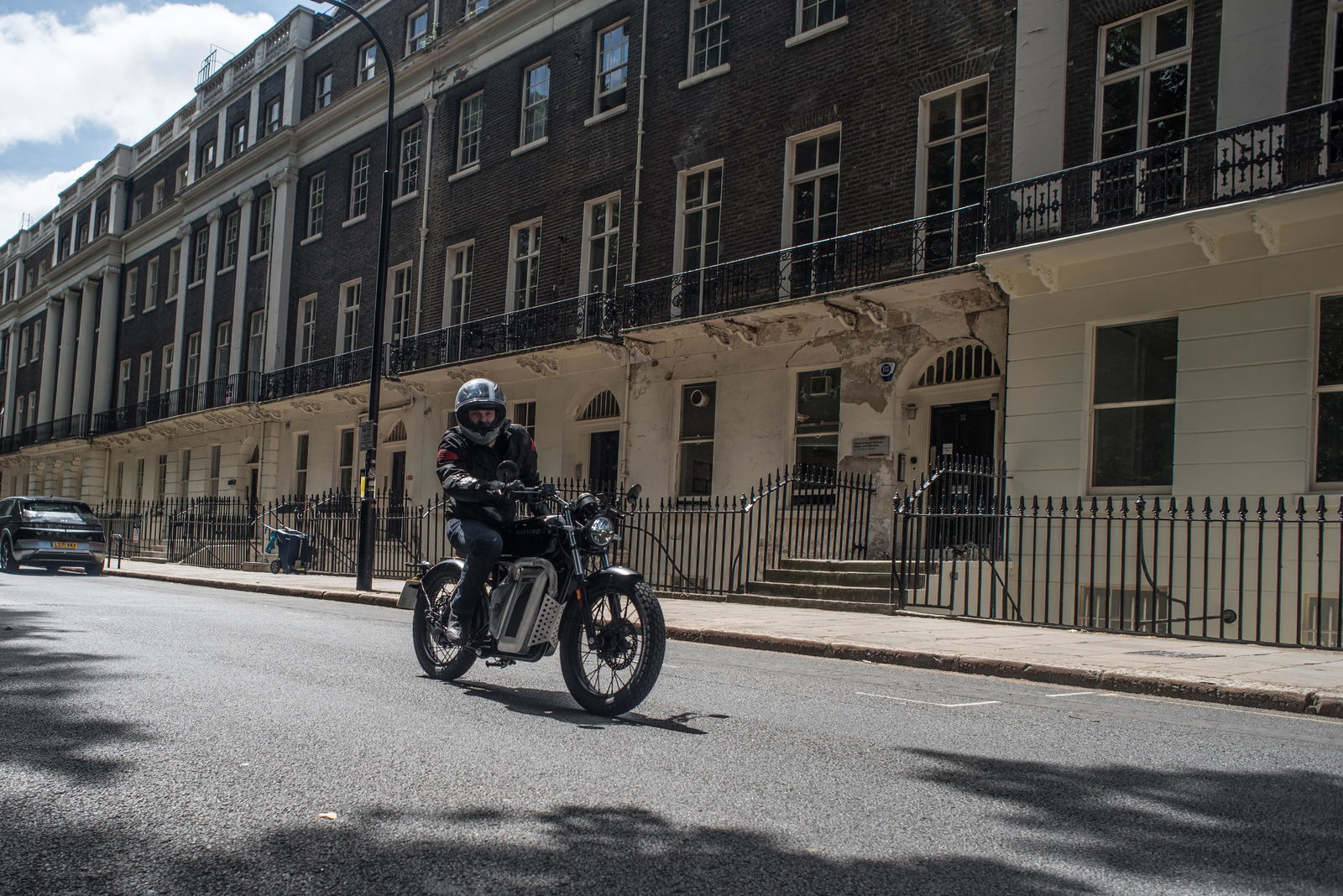
It’s a soft & comfortable ride, even for me as a 6’3”ish rider. The brakes are linked with a CBS system, the minimum requirement for up to 125cc machines, and did well - though the front brake solely felt much weaker in application than the rear. Pushing the rear brake activates a single piston on the front disc, so there is a little dive when applying the left lever (for the rear brake) heavily - whilst the right lever operates the remaining two front pistons.
Maeving said they designed the front brake to be a tad softer consciously for novice riders, who may grab a fistful of brake - though, I will add, it was very easy to lock up the rear brake and do some skids if you sharply pull it. Shameful good fun at low-speed riding.
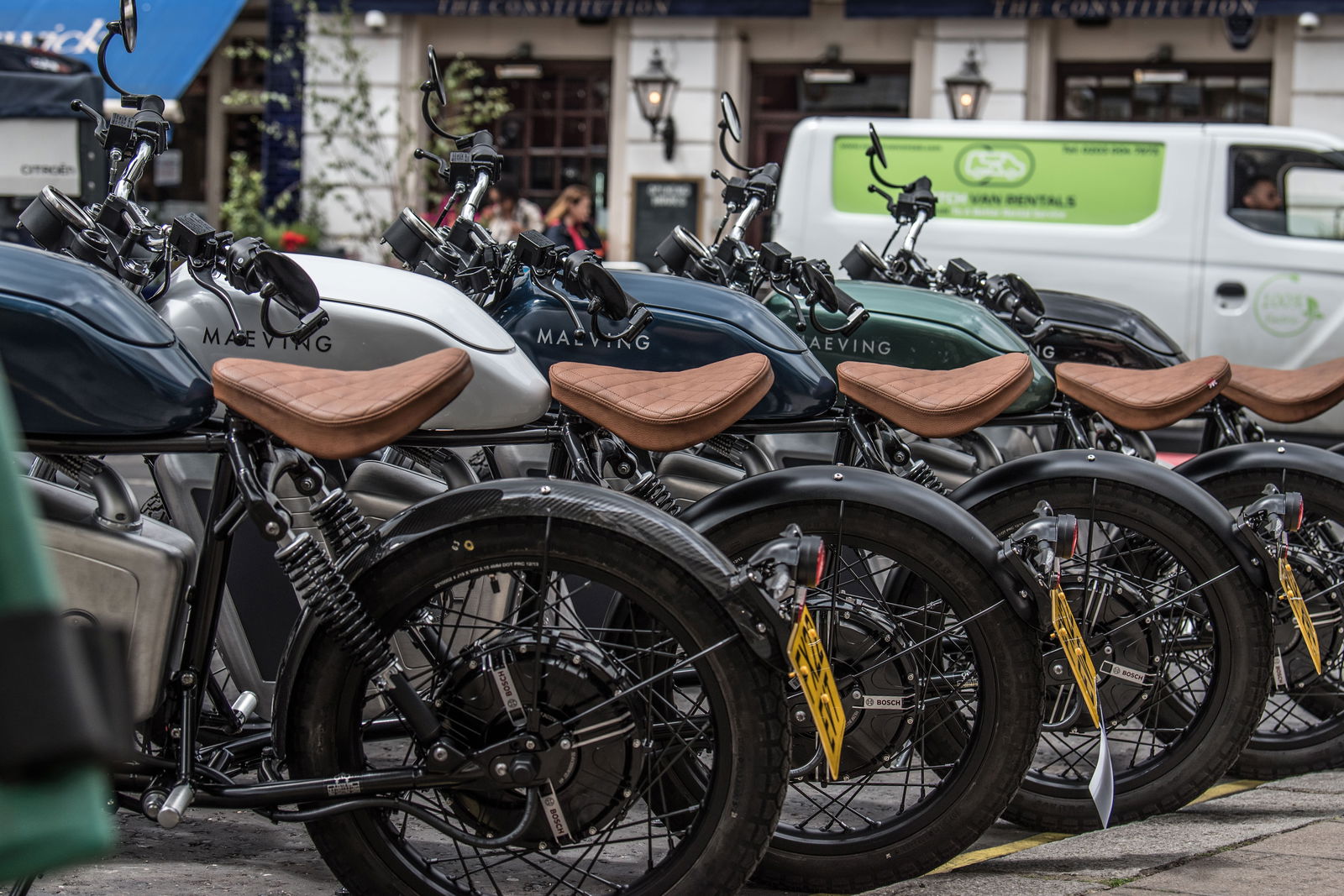
As it’s a hand-built machine built to order in Coventry, you sense a lot of love and passion going into each RM1 machine, and the build quality felt especially premium to match the price tag - if not exceed it.
Last up, the switchgear was all intuitive, and the analogue dial was easy to read whilst matching the overarching style - though, the indicator light was a tad small and disappeared behind the needle when riding at around 20mph, and the inlaid LCD displays your charge percentage, but not estimated range.

What I liked
- Superbly nimble and easy to ride.
- Style is spot on, perfect for a pose at a coffee stop.
- Removable batteries are smart and easy to use with drop-in plate.
What I didn't like
- Too silent? The indicator has no noise, and the small indicator light can be hidden behind the speedo-needle as it sits at around 20mph.
- Skids for days - good fun, but CBS will always raise a few question marks in wet weather.
- Range seems to vary wildly on your weight, factor this in if you plan on doing a 30-mile ride on a single battery. Plus you can’t plug in the bike directly, the batteries have to be taken out to charge.
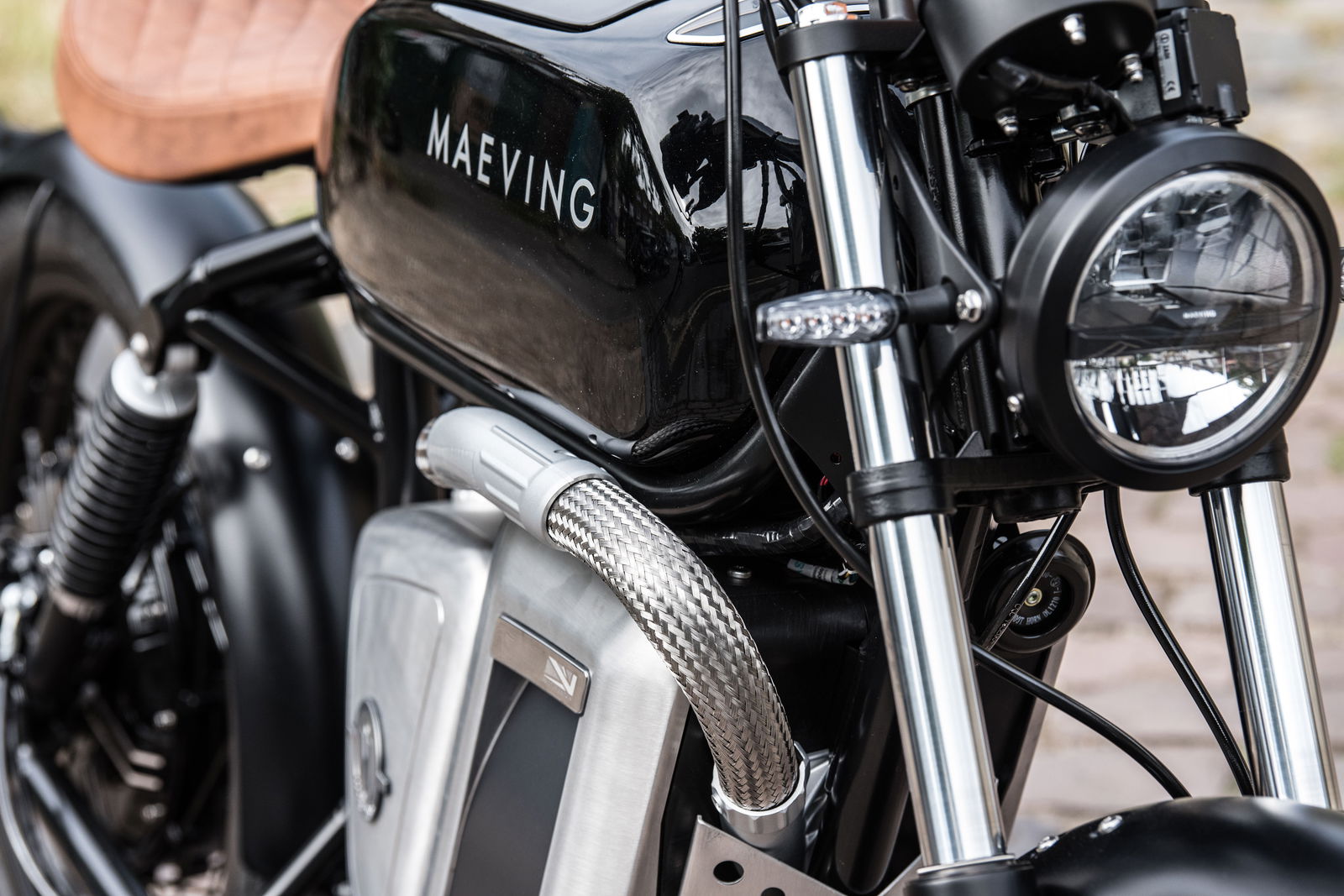
Conclusion | Maeving RM1
When it comes to electric motorcycles on the market, Maeving may not be the first, but are without a doubt the most elegant.
Easy to ride and perfectly suited to city rides, electric in this form just makes sense. Not only did this make riding in London easy, but it also made it good fun. We even had a few chicanes en route, and chucking this around was stupidly fun (I wanted to go back and do it all day).
What’s next for Maeving? They said they’re primarily focusing on getting the RM1 up and running before branching out to alternatives. I jokingly asked if a Lambretta-style scooter would be next, but the more I thought about it, the more I think it would suit both the style & approach of Maeving.
They are actively pondering the advancements of battery tech, with a keen eye on the up-and-coming electric future of two wheels. So you’ll be sure to see this name again, especially at a trendy coffee shop near you.
Thanks to Maeving for having us along, head to their site to find out more about spec, prices, and how to get a test ride booked in.

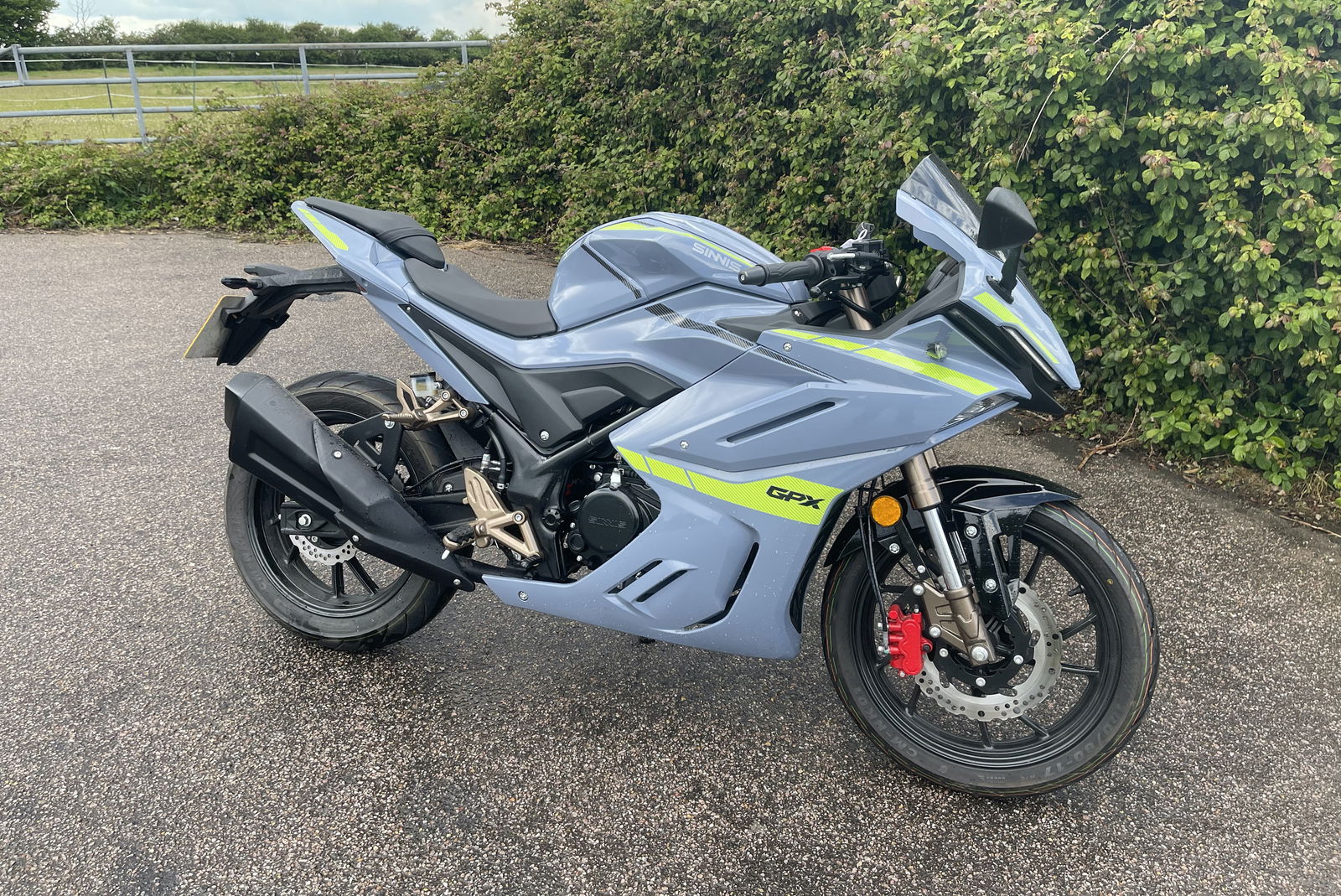
.jpg?width=1600)